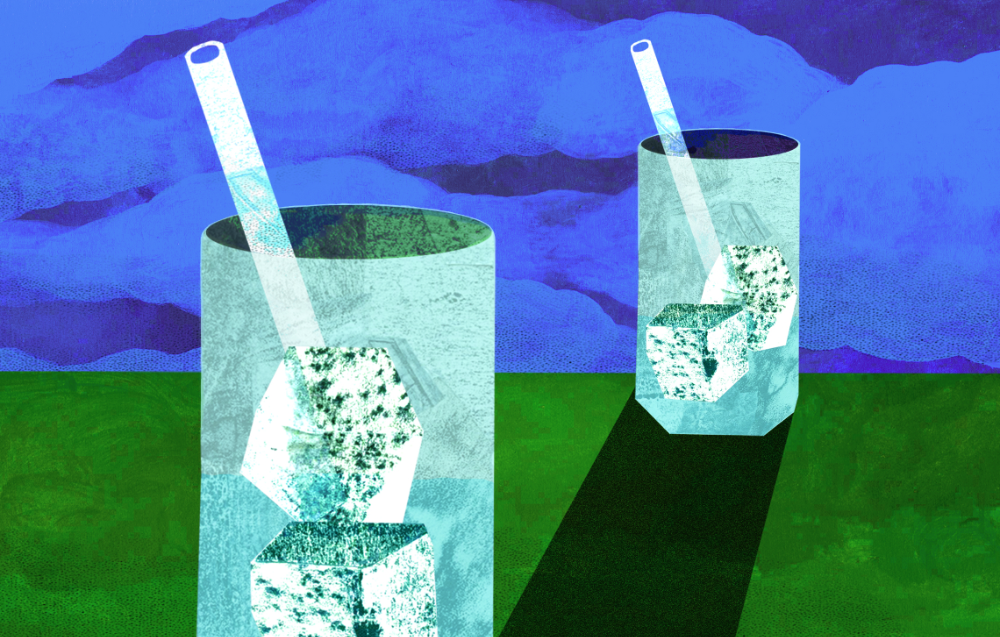It’s a sunny April evening, and I’m meeting my friend Michael, celebrating his safe return from a trip abroad. Per arrangement, he has left a cocktail glass on his porch; I brought the drink makings, plus my own glass; mixed two drinks—never touching his glass—and took mine to a chair in the drive. Michael emerges from his house, picks up his cocktail and takes a second seat, 12 feet from mine.
The Socially Distanced, Self-Quarantining Cocktail Hour. Two men raise a toast across an expanse of driveway. Whose movie would this be from?
Bergman? Buñuel? “What would we have thought a month ago if we’d seen this?” Michael asks.
Then again, so much in Plague Time is strange. All the things we’ve learned to do and not do; the disorienting new ways we’ve learned to think. Who would have envisioned everyone learning to proceed on a worst-case-scenario basis, every object vetted, every interaction scrutinized? Even as actual airports have emptied, daily life has become a TSA security procedure. “I’m ill-equipped to be a germophobe,” I email a friend. But that’s the drill. You worry about everything.
Consider the rituals of food shopping. For several weeks, following official advice, we practice a laborious precautionary routine. Bring the packages home, swab down with Clorox wipes. But wait: do I need a second pair of gloves to do this? And what about my clothes? Do I change and shower right now, before the decontamination process? Then, suddenly, the official advice changes. Now it seems we don’t have to do any of that. And who knows what the advice will be tomorrow?
A world in which you fear touching doorknobs, or mail, or a pineapple, is a world tinged with paranoia—the inanimate world made monstrous. Worse is viewing other humans as sources of contamination. Who just coughed? Anxiety surges. The rampant aversion creates odd thought transpositions. On TV we watch an old SNL sketch in which Will Ferrell plays a Marine drill sergeant, getting in his soldiers’ faces with a spittle-flecked rant, and I think, Eeeww, too close! And was it really just six weeks ago that I reported on a dance-marathon fundraiser in a field house crammed with 3,500 college students? Now I wince even to think about that event: a sickness conflagration; a virus bomb.

There are other fears. The health of my 91-year-old father. My friend the hospitalist, my other friend the ER doc: are they OK, battling out there while we sit in our castle with the drawbridge up? And financial worries. What about my job, and my wife’s job? What about the fund earmarked for our child’s college education? Is any of that left?
Shortages become routine. Forget about protective gloves or facemasks, or toilet paper; try getting a pair of 15-pound dumbbells. “Currently unavailable.” Or a dog. The shelters are empty. Americans are buying up canines. But, we sputter, we aren’t just hoarding, we actually already needed a dog! Well, join the line.
On the plus side are some collateral benefits. Like cooking new dishes, and having nightly family dinners. Reading books. Writing letters—actual letters to put in the mail. Undertaking long-put-off household projects. And just hanging out together. You are part of a mass collective exercise in being present. You can’t be elsewhere, after all.
The future has simply evaporated. All plans have been laid waste to. Our trumpet-playing eighth-grader, Larkin, after failing to qualify the last two years, got accepted into an all-state orchestra. But now, zap, the concert is gone. Our family had planned an early-summer holiday getaway. Zap! Instead of planning, we have de-planning. On your weekly datebook, take a red Sharpie and draw a big X across the whole page. Wait one week, and repeat.
“I miss school,” Larkin says one night at bedtime, voice quavering; “I want my life back.” Our child is a hardy young person, loath to show vulnerability. But sharp vicissitudes afflict even the stoical.
The cancelation of fun is most sadly visible in parks. Some towns remove the hoops from basketball backboards, or dump sand on skateboard courses. Such is the unquenchable desire of people—young people especially—to congregate for fun, that the very tools of recreation must be removed or disabled. I walk through the park and find it eerily empty, the swings wrapped up around the overhead bar so that they cannot be reached. The Plague has vandalized daily life; there’s a weird dreadfulness to those swings, as if they’ve been strangled. A little girl’s jacket, purple, hangs on the fence, a relic from a happier time.
How long will the current regimen of isolation last? Will sporting events and concerts resume—with
spectators and audiences? Will schools open in the fall?
Perhaps, sometime in the not-too-distant future, this will all seem a bad dream, a Twilight Zone episode that we can’t believe we lived through. I hope so. But even if the corona crisis subsides, this is a show we are all too likely to see again. Plague Time is our time.
Cooper is contributing editor at Commonweal and writes a column, “In Our Midst,” for Hartford Magazine. For this issue of Amherst, he interviewed four alumni about COVID-19.
Illustration by Elisabetta Bianchi